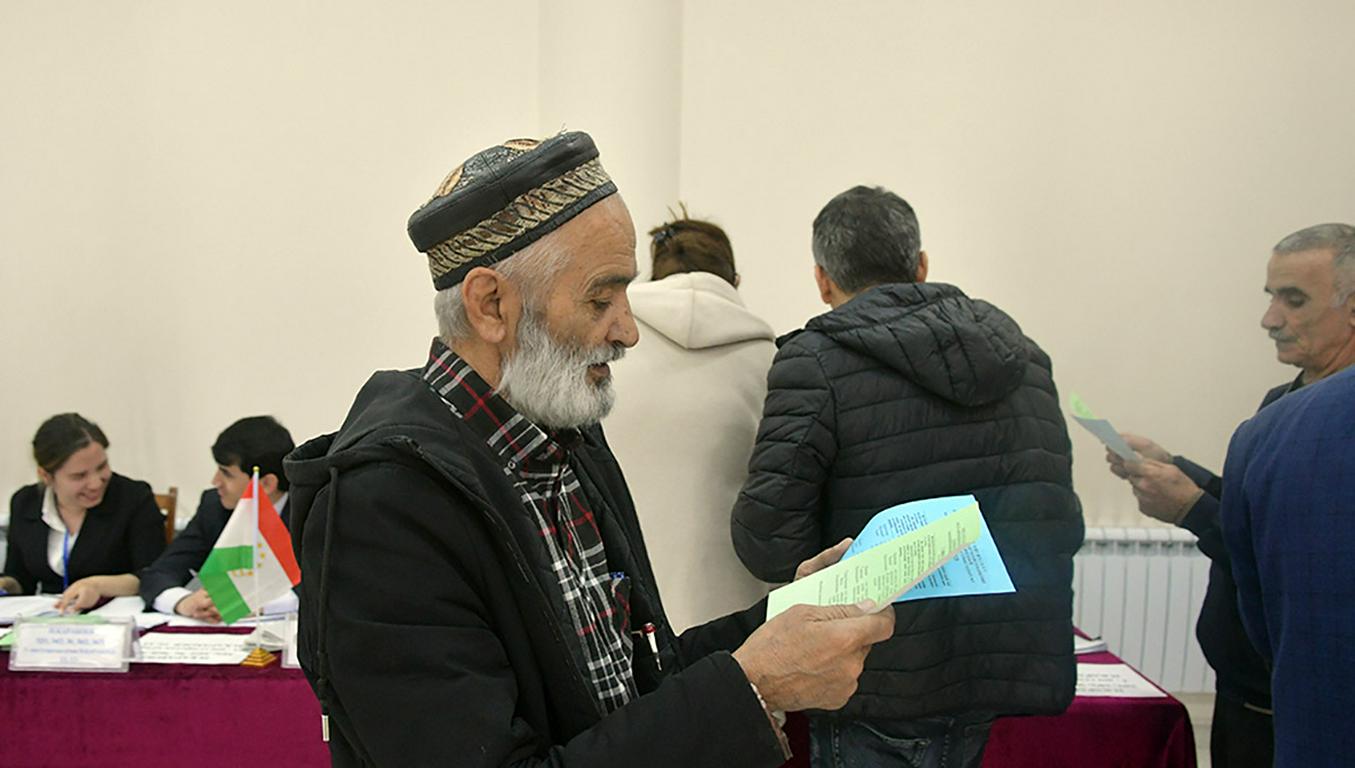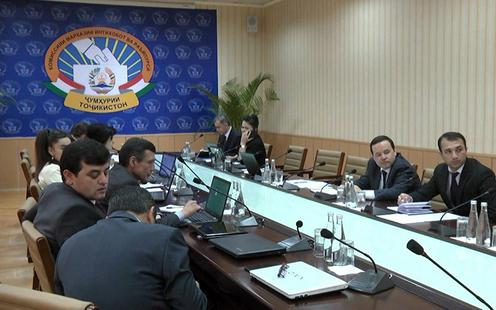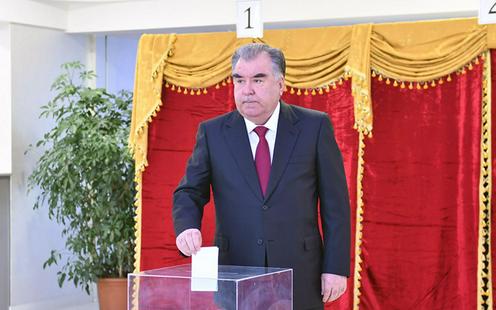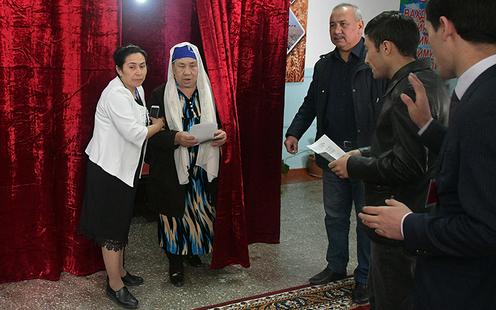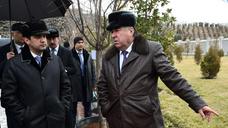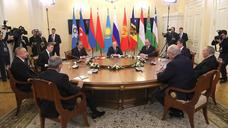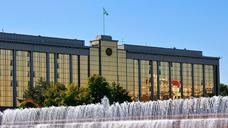The results of the 1 March parliamentary elections in Tajikistan have been announced. More than half of voters (50.4%) voted for the ruling People’s Democratic Party of Tajikistan (PDPT), which will occupy 47 of the 63 seats in the Majlisi Oli’s Majlisi Namoyandagon (lower house of parliament). Five other parties will also have deputies in the Majlisi Namoyandagon – 7 seats went to the Agrarian Party (16.5% of the vote), 5 to the Economic Reform Party (16.6% — higher than the Agrarian Party but the AP won two extra votes from single-mandate districts in the country’s mixed voting system), 2 to the Communist Party (3.1% — both seats from single-mandate districts), and one each to the Socialist (5.2%) and Democratic (5.1%) Parties. Of the country’s seven registered parties, only the Social Democratic Party of Tajikistan (SDPT), widely seen as the only real opposition force in the country, failed to make it into parliament, officially garnering only 0.32% of the national vote.
Even before the final results were announced, very few critically-minded Tajiks doubted that more than two-thirds of seats would go to representatives of the ruling party. Independent observers say that the whole thing was arranged in advance and the seats had already been distributed, and that elections in the country are coming more and more to resemble a simple routine which the authorities feel obliged to roll out to maintain their legitimacy.
This was evident during the election process itself and in the atmosphere around the country at the time, which showed no signs at all of any clash of political elites. Not a single party, with the exception of the SDPT, dared to raise any serious issues of domestic or foreign policy – corruption, regionalism, the lack of judicial independence and the state-dominated media – or any of the other problems that ordinary Tajiks find so glaring.
The party of power and the parties under its power
All seven of the country’s authorised political parties registered to participate in the elections: the ruling People’s Democratic Party of Tajikistan, the Economic Reform Party, the Democratic Party, the Agrarian Party, the Socialist Party, the Communist Party and the Social Democratic Party. 238 candidates competed for 63 parliamentary seats: 173 of them fought in single-mandate districts and 65 contested a single country-wide electoral district by party list. In other words, each parliamentary seat was fought over by on average four candidates.
But if the quantities suggested competition, the quality of the contest pointed instead to the staged nature of the whole process. To judge by a party leaders’ debate organised by Radio Liberty’s Tajik service Radio Ozodi a month ahead of polling day, the messages of all of the contesting parties seemed rather superficial and banal – mere platitudes about concern for public welfare and the country’s socio-economic development. Most of the parties’ leaders declared themselves to be opponents of the government, but were unable to convincingly explain how their positions were any different from those of the authorities, justifying yet again their status as what is known in Russian as a “pocket opposition”.
The most serious attempt to engage the authorities in some kind of debate was undertaken by the Social Democratic Party of Tajikistan (SDPT), which announced in January that it had no faith in the transparency of the upcoming elections, but would participate in them anyway in order to help consolidate the national will. If he was elected to parliament, SDPT leader Rahmatullo Zoyirov promised to propose draft laws on electoral deposits and political parties, and to raise the issue of Tajikistan joining the Eurasian Economic Union (EAEU). Two months prior to the election, the party unsuccessfully attempted to get the courts to abolish the current electoral deposit, set at 5800 Somonis ($580), which all parliamentary candidates must currently pay in order to take part in the elections.
The most active and self-assured party during the election campaign, of course, was the ruling PDPT, which occupied 51 of the 63 seats in the previous parliament. With the resources of the entire state apparatus at its disposal, Tajikistan’s most numerous party in terms of membership (more than 500,000 in a country with a population of less than 9 million), headed by President Emomali Rahmon, nominated the highest number of candidates both by party list and within the single-mandate districts. State officials of various ranks ran as candidates for a seat in parliament: the former chairman of the Tajik Security Council, the former justice minister, the ex-minister of labour and social development, the former chairperson of the Committee on Women and Family Affairs, the deputy head of the Khatlon region and other representatives of the executive branch. Almost all of them left their posts in the six weeks leading up to the elections.
A quiet campaign
Back at the start of December last year, it emerged that, despite a ban on members of the Central Commission on Elections and Referenda (CCER) belonging to any political party, the regulatory body included at least three members of the ruling PDPT. The CCER itself said that the three had relinquished their party cards during their work for the Commission. Yet former Communists, Democrats and members of other parties, who could also have “temporarily relinquished their party cards”, were not given seats on the electoral commission.
During the above-mentioned debate, SDPT leader Rahmatullo Zoyirov argued that only by allowing for the proportional representation of representatives of all parties as CCER observers could transparency be assured. On the question of government resources, the politician stated that, all around the country, the elections were being organised by representatives of the executive, appointed to their positions by the president rather than elected by the people, and so they too cannot act independently.
Aside from the PDPT, the parties were given extremely limited opportunities to conduct their election campaigns. After the official registration date, they had less than a month to try to get their message out to voters. It was only just over a week before the start of elections, from 20 February, that all of the parties were given the chance to appear on state TV. Each of them was given 40 minutes free airtime to present their programmes, with another 20 minutes allotted to individual candidates. No especially heated debates emerged from this.
It is important to underline that this is the only time that party leaders ever get to appear on Tajik TV screens – once every five years, for 40 minutes. Lacking any kind of sustained media presence, their chances of shaping public opinion and winning voters’ sympathies through a one-time TV appearance are practically zero.
Added to this, the parties themselves (with the exception of the SDPT) demonstrated a curious lack of zeal. Even allowing for the limitations under which they were working, their campaigning left a great deal to be desired. On the local level it went no further than putting up some A4-size campaign posters to which few people pay any attention. None of the parties or candidates was particularly visible on social media and messaging apps, despite the potentially very real role that social media could play in spreading their message, especially in Tajikistan, where more than a million of the country’s citizens are known to be working outside of the country. The latter represent a resource that could and should have been exploited to the full.
A comparatively more active approach was taken by the SDPT, whose leader Zoyirov created a flurry on social media with his complaints against the CCER and declarations about flaws in the electoral system. Regime opponents based outside of the country, such as the National Alliance of Tajikistan and Group 24, both declared terrorist organisations and banned within Tajikistan, attempted to drum up support for the SDPT. They made statements endorsing the Social Democrats and called on their own supporters to vote for them.
In spite of the former influence wielded by the Islamic Renaissance Party of Tajikistan (IRPT) in Tajik society, these days even veiled sympathy for the organisation can land you a jail sentence in Tajikistan. The same is true of Group 24. Their statements of support for the SDPT are hardly likely to have had any real political influence inside the country; if anything they may have damaged the party. The SDPT leadership therefore responded by issuing a statement denying that the party maintained any kind of links with these groups and calling their declarations of support mere “personal opinions”.
The ballot and its results
Election day itself passed by in similarly quiet fashion, without any kind of incidents or major pronouncements. At around 3 p.m. local time, the CCER announced that the election had been officially recognised as valid, with 75% of the country’s voters (more than 3.7 million out of a total of 4.9 million) having cast their vote. At 8 p.m., following the closure of polling stations, CCER head Bakhtiyor Khudoyorzoda declared that preliminary results of the ballot would be announced after midday on 2 March. According to him, the elections had been conducted transparently, and the CCER had not received “any complaints or notifications of violations during the course of the election process”.
A similar announcement was made on 2 March by observers from the Shanghai Cooperation Organisation (SCO), who, as has become tradition, announced that the elections had been conducted transparently, democratically and “in conformity with the electoral legislation of the republic and the country’s international obligations”. The observer mission from CIS countries, too, noted “the high level of at which the elections were conducted”.
Local journalists and Tajik residents, however, recorded violations at a number of polling stations, particularly family voting – where one individual casts several ballots on behalf of other members of their family. On social media, people also raised doubts about the high turnout, and many complained that they had not been notified in advance about the elections. Others noted the absence at some polling stations of election observers and video cameras. Those who took to social media to discuss the elections, however, were comparatively few, once again demonstrating the low level of interest in elections in general among the Tajik public.
When the results were announced, SDPT leader Rahmatullo Zoyirov stormed out of the CCER’s press conference in protest, and his deputy, Shokirjon Hakimov, declared that widespread vote-rigging had taken place. According to the official results, the SDPT received only 0.32% of votes.
“According to data that came to us from the Gorno-Badakhshan Autonomous Region, from districts in the Kulyab area of Khatlon region, and from Tursunzoda, Shahrinav, Hisor and Rudaki, our party was in second place and we were set to gain two or three parliamentary seats. The official statistics stating that only 13,000 voters voted for the SDPT have no basis in reality,” he said, adding that the party’s political council would later announce its official position on the elections.
Political apathy
According to Tajik journalist Rajab Mirzo, Tajiks have no faith in elections in the country on account of the predictability of their results, which deprives people of the feeling that their vote matters and that they can change things for the better.
“In developed countries, the election process is long. For five years, parties and candidates compete for voters, and every vote is important to them. Because of this, the candidates try to develop interesting programmes and come up with attractive initiatives. In Tajikistan, elections have become supremely dull affairs with predictable outcomes. The president launches the process with a decree and, the day after the elections, the head of the CCER brings it to a close. No one expects any excitement. People even make predictions about who the next speaker of the lower house will be, and these predictions almost always come true. The lack of intrigue is one of the main reasons for the lack of interest in the elections among the public,” Rajab Mirzo observes.
The current parliamentary elections are the fifth since the end of the civil war and the establishment of peace in 1997. And if, up to 2015, interest in the election campaign was maintained by the presence in the political arena of the IRPT, after the banning of the party in 2015, all sense of political competition has been lost. Some semblance of activity was shown by the Communist Party under Shodi Shabdolov, but since his departure, the party has become almost invisible. Besides this, during the presidential elections in 2013, the Tajik opposition attempted to unite around a single candidate, Oinihol Bobonazarova. The attempt failed, but the presence of a legal opposition nevertheless provided the more active sector of society with some kind of hope for political competition.
Following the parliamentary elections in 2015, the situation has changed dramatically: not a single oppositional (or moderately oppositional) party made it over the five percent electoral threshold, including the communists and the Islamists. For the first time since the war, representatives of the IRPT failed to obtain a single seat in parliament, and this was followed by a wide discreditation campaign against the party which ultimately led to it being banned. Subsequent reprisals against members of the Islamist party, lawyers and civil rights advocates, attacks on regime critics and pressure on the press have all contributed towards alienating the public from the political process as a whole.
“The politicisation of society occurs when people feel that they are able to influence the process, or that they ought to influence the process, but we still don’t see this in Tajikistan. In recent times, ever greater numbers of the more active sectors of the population, who could have become politicised, are leaving the country for good, including through the resettlement programme to Russia,” Tajik political scientist Parviz Mullojanov notes.
Besides this, legislative organs in Tajikistan are frequently criticised for their lack of initiative and absence of real debate. Even the speaker of the upper chamber of parliament, Mahmadsaid Ubaidulloev, referred to this “trait” during the course of one session of the chamber, observing that “deputies’ quietness is a cause for concern”.
“All matters of political and economic importance are decided by the executive branch, and the ruling party occupies more than 90% of seats in parliament. In such conditions, parliament does not play any significant role. It is simply an organ to formalise the process and follows the general political line, while decisions are taken by the office of the president,” Parviz Mullojanov concludes.
Interest in Tajik elections has fallen away on the international level too. It would appear that even the OSCE has given in to the dictates of the Tajik executive, having reduced its observation of elections in the country to a minimum (to date not a single election in the country has been declared free and fair by the OSCE). While 525 international observers were present for the elections in 2015, with 167 of them representing the ODIHR/OSCE, this year’s ballot was attended by only around 230 observers, mainly from the CIS, the SCO and the diplomatic corps in Tajikistan.
After visiting Tajikistan back in January, an assessment mission of the OSCE’s Office for Democratic Institutions and Human Rights noted a “lack of progress in bringing the electoral legal framework and its implementation closer in line with OSCE commitments and other international obligations and standards for democratic elections”. In such circumstances, the ODIHR/OSCE announced that it would send its observers to the upcoming elections only on account of “the interest of (civil society) interlocutors in the potential ODIHR election observation activity” and the “declared interest of the authorities to maintain a dialogue on electoral issues”.
Hasan Muhibbi
Translation and final results update by Nick L.
-
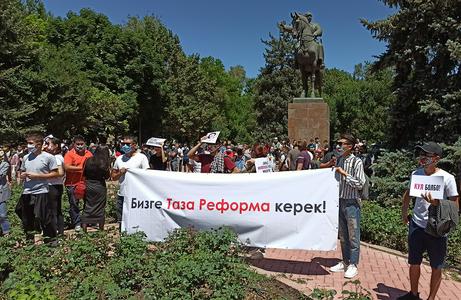 30 June30.06ФотоReAction against censorshipDemonstrators in Bishkek protest against the draft law “On the manipulation of information”
30 June30.06ФотоReAction against censorshipDemonstrators in Bishkek protest against the draft law “On the manipulation of information” -
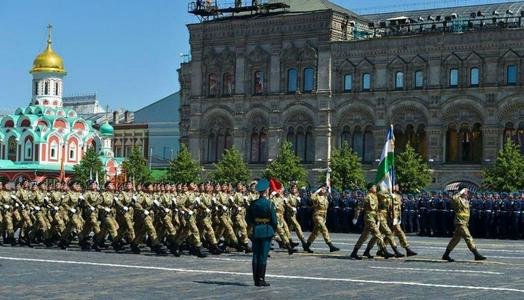 25 June25.06ВидеоAn Uzbek firstTashkent sends troops to Russia’s Victory Day Parade for the first time. There they took part alongside their neighbours
25 June25.06ВидеоAn Uzbek firstTashkent sends troops to Russia’s Victory Day Parade for the first time. There they took part alongside their neighbours -
 13 June13.06Waiting for the fallWith four months to go until the parliamentary elections in Kyrgyzstan, will a new party of power emerge?
13 June13.06Waiting for the fallWith four months to go until the parliamentary elections in Kyrgyzstan, will a new party of power emerge? -
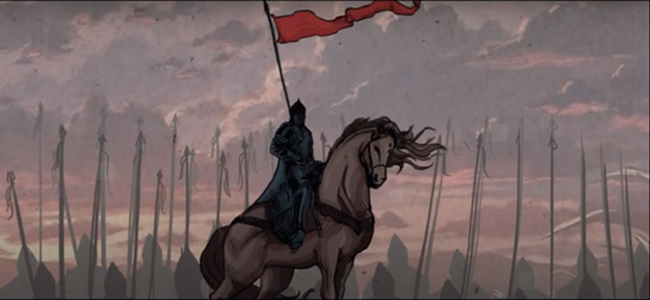 29 May29.05A Great CrusadeKyrgyz deputies mobilise against anti-corruption group Chong Kazat’s rhetoric
29 May29.05A Great CrusadeKyrgyz deputies mobilise against anti-corruption group Chong Kazat’s rhetoric -
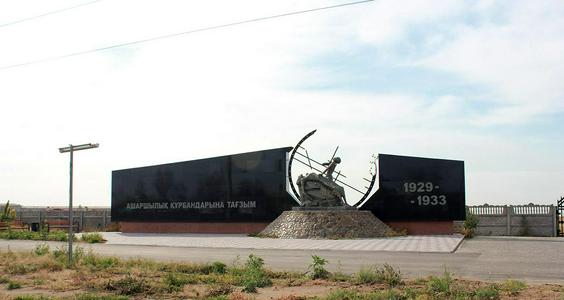 14 May14.05Remind and ruleWhy Ukraine and Kazakhstan relate so differently to the millions of famine deaths they suffered during the Soviet era
14 May14.05Remind and ruleWhy Ukraine and Kazakhstan relate so differently to the millions of famine deaths they suffered during the Soviet era -
 05 May05.05With Daddy’s blessingPolitical analysts on Toqaev’s sudden decision to remove Dariga Nazarbaeva from office
05 May05.05With Daddy’s blessingPolitical analysts on Toqaev’s sudden decision to remove Dariga Nazarbaeva from office
